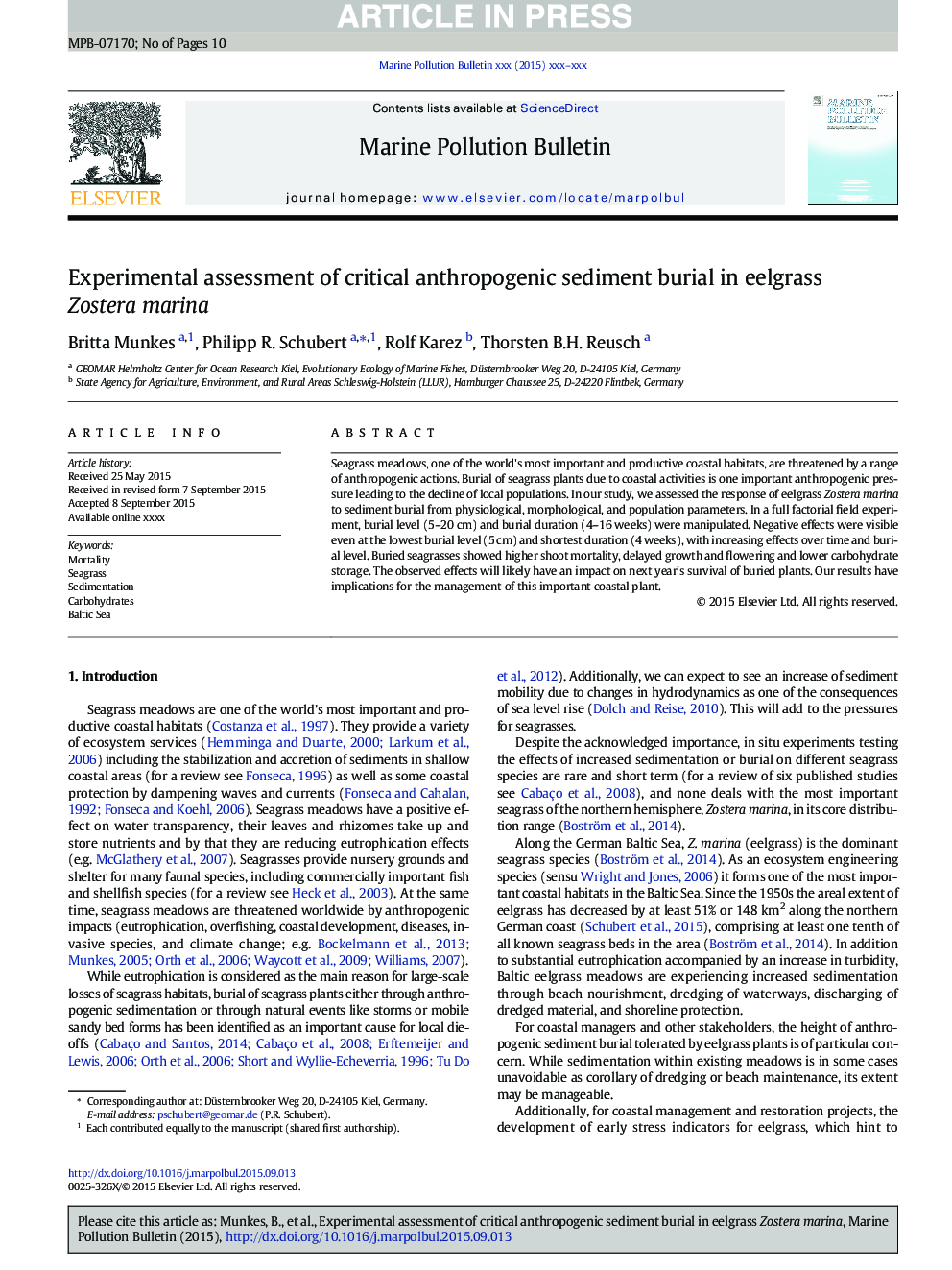| Article ID | Journal | Published Year | Pages | File Type |
|---|---|---|---|---|
| 6356682 | Marine Pollution Bulletin | 2015 | 10 Pages |
Abstract
Seagrass meadows, one of the world's most important and productive coastal habitats, are threatened by a range of anthropogenic actions. Burial of seagrass plants due to coastal activities is one important anthropogenic pressure leading to the decline of local populations. In our study, we assessed the response of eelgrass Zostera marina to sediment burial from physiological, morphological, and population parameters. In a full factorial field experiment, burial level (5-20Â cm) and burial duration (4-16Â weeks) were manipulated. Negative effects were visible even at the lowest burial level (5Â cm) and shortest duration (4Â weeks), with increasing effects over time and burial level. Buried seagrasses showed higher shoot mortality, delayed growth and flowering and lower carbohydrate storage. The observed effects will likely have an impact on next year's survival of buried plants. Our results have implications for the management of this important coastal plant.
Related Topics
Physical Sciences and Engineering
Earth and Planetary Sciences
Oceanography
Authors
Britta Munkes, Philipp R. Schubert, Rolf Karez, Thorsten B.H. Reusch,
